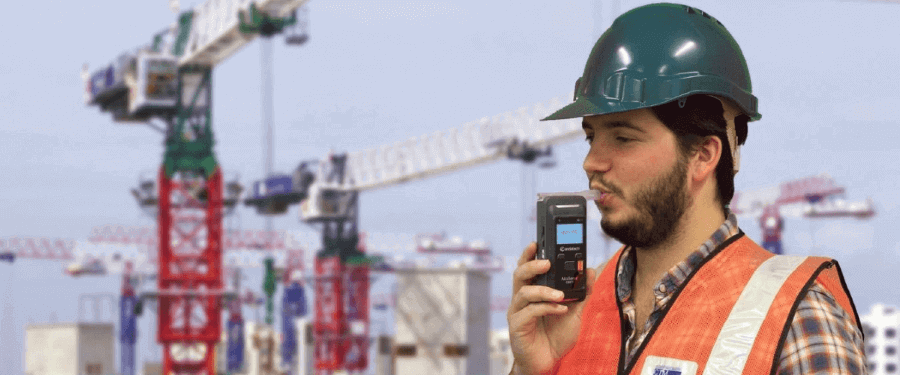Accurate breath alcohol data ensures the proper execution of your company's drug and alcohol testing policy while instilling confidence in your employees on the fairness of said policy. Before implementing breath alcohol testing in the workplace, understanding the factors that can affect the accuracy of a breathalyser will help minimise the possibility of getting false readings.
Individual factors
Although most breathalysers quantify the concentration of alcohol compounds in human breath in a similar way, every individual processes alcohol differently. A person can feel tipsy even though their breath alcohol level is way below the normal acceptable limit of 0.05g/210L. On the other hand, another person who feels completely sober can have a much higher breath alcohol concentration than expected.
This is something to be mindful of when interpreting breath alcohol results because an unusual breath alcohol reading does not necessarily translate to an inaccurate breathalyser measurement.
Types of sensor
There are two common types of breathalyser sensors in the Australian market - semiconductor and fuel cell sensors. Even though semiconductor breathalysers are cheaper in price, fuel cell breathalysers are superior in terms of accuracy and reliability as they are able to detect the slightest difference in breath alcohol concentration down to 0.001g/210L. Besides, they are able to explicitly measure only ethanol compounds without taking into account other interfering substances that could possibly be present in human breath.
Therefore, if a semiconductor breathalyser is used, there might be a higher chance of obtaining false positive results.
Presence of interfering substances
Some common interfering substances are ketone and acetone which can be found in the breath of individuals on a low-calorie or keto diet, or in diabetic patients. Due to limitations in the technology, semiconductor breathalysers might mistake these substances for alcohol.
Nevertheless, alcohol compounds that do not come from deep lung air might still be picked up by a highly accurate breathalyser. They can come from alcohol residue in the mouth if a breath alcohol test is conducted right after drinking or from alcohol-based products used in the surroundings when the breathalyser is used, such as hand sanitiser and perfume.
Handling and usage
Similar to using other measuring equipment, careful handling and correct ways of usage are important keys in making sure that the breathalyser measures accurately. Some general tips are:
- Wait at least 20 minutes after eating, drinking, or smoking before blowing into a breathalyser.
- Blow slowly and steadily to prevent saliva or excessive moisture from entering the breathalyser.
- Use a new mouthpiece for every individual test.
- Avoid accidental dropping and shock.
- Store the breathalysers in a cool, dry place, free from alcohol.
Breathalyser sensors are delicate. If they are not handled and used according to the instructions provided by the manufacturer, they can get damaged and become faulty.
Maintenance and calibration
During regular maintenance and calibration, calibration technicians will check the breathalyser’s reading using a simulator with several known breath alcohol concentrations. If there is a discrepancy in the readings, they will make adjustments to the breathalyser accordingly and check for damage if calibration does not correct the issue.
If the breathalyser is used for high-volume testing frequently but is not sent for calibration based on the manufacturer’s recommendation, sensor drift can happen over time and possible damage to the sensor can go unnoticed.
This essential but often overlooked procedure of calibration is a foolproof way of making sure that a breathalysers’ accuracy is always in check. It should be done once every 6 to 12 months or when a breathalyser is suspected to be inaccurate. For a better guarantee, go for Australian Standard AS3547 certified breathalysers because they are required to maintain accuracy for a set period of time. Thus, calibrating these breathalysers according to the recommended timeline provides you with the confidence that your breathalysers are good to go at all times.





